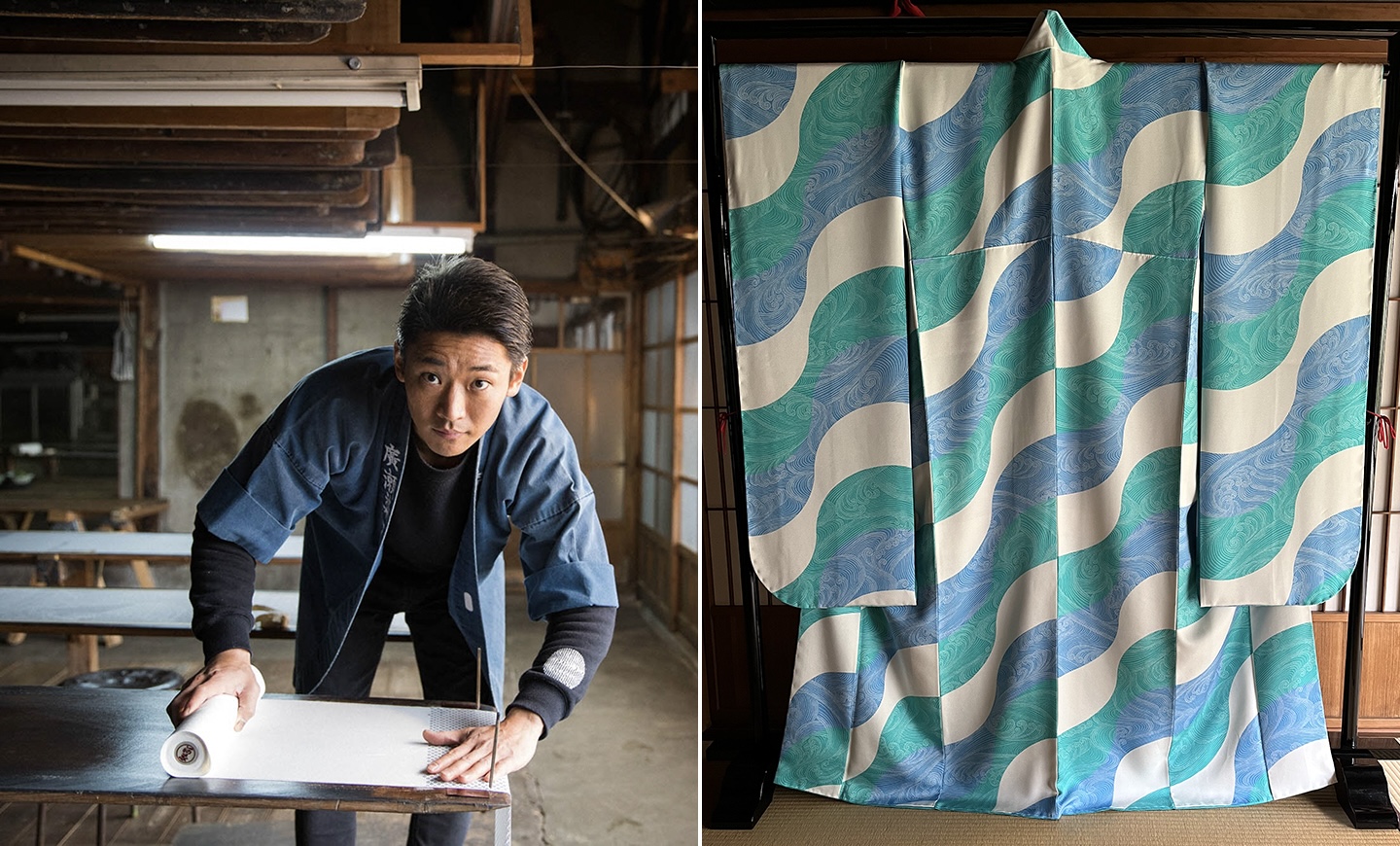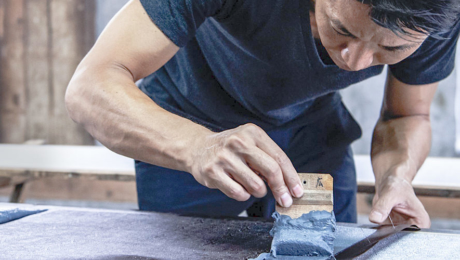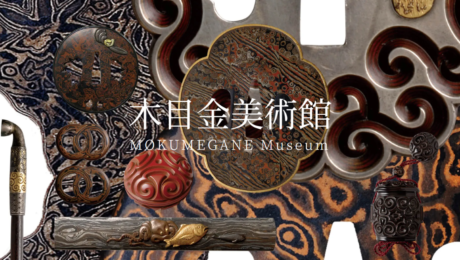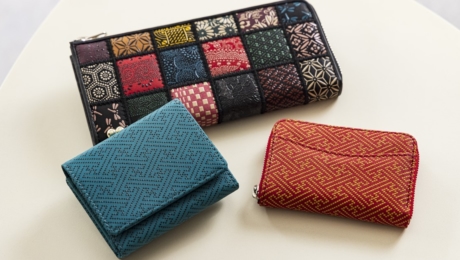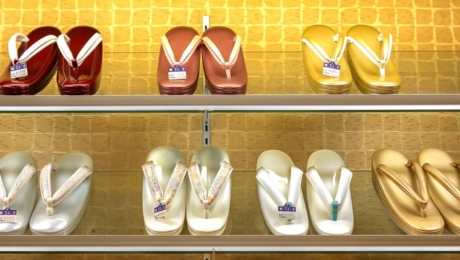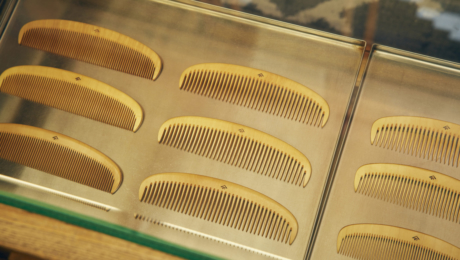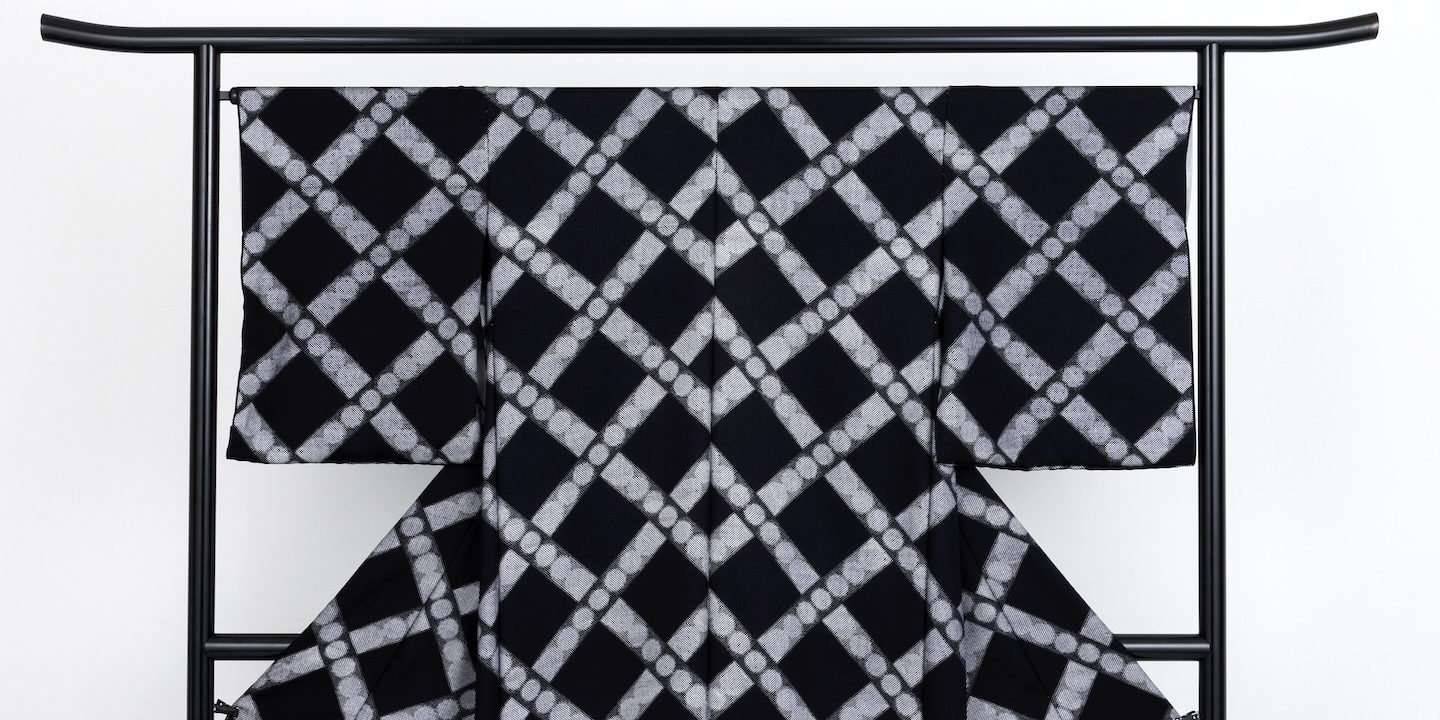
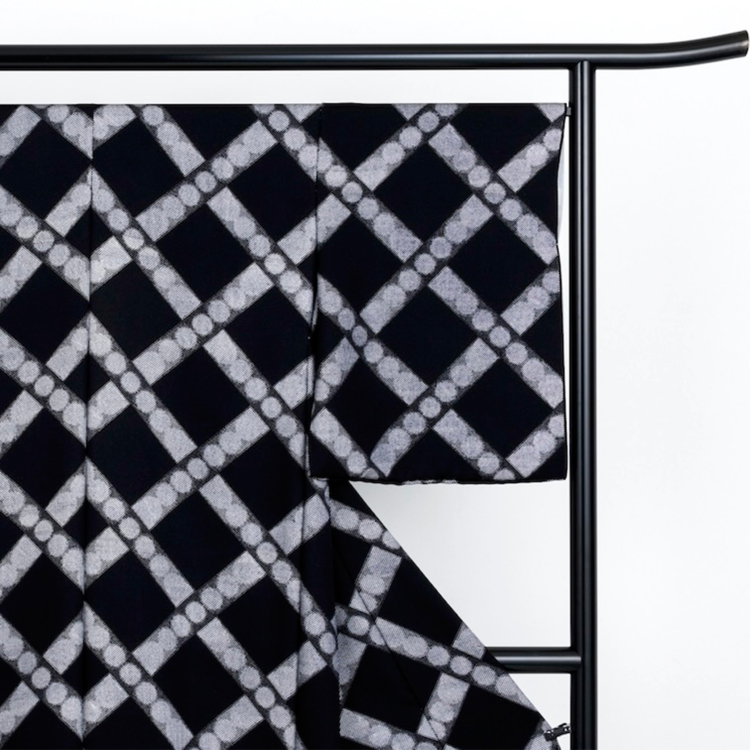
Hirose Dyeworks’ New Venture with “Paris Komon”
2024.09.25
FASHIONHirose Dyeworks was founded in 1918. For over a century, it has preserved and passed down the traditional Edo Komon dyeing techniques, which originated in Japan’s Muromachi period. While the factory specializes in Edo Komon, in 2011, it launched a stole brand called comment? to explore new possibilities beyond traditional kimono.
“Paris Komon,” introduced by fourth-generation Yuichi Hirose, is another step toward opening new doors. The idea began when he was invited to conduct a workshop at the School of Decorative Arts in Paris, France. The students’ designs were transformed into vibrant stoles, and the resulting Edo Komon created through collaboration with Parisian designers was dubbed “Paris Komon.”

“Parquet,” unveiled in 2023, is another Paris Komon piece of French design. “Parquet” is a traditional French flooring technique that involves arranging geometric patterns with wood. The motif used in this piece is the same as that of the floors of the Palace of Versailles. Despite being large and striking compared to the intricate patterns typical of Edo Komon, it draws the eye with its unique design.
Upon closer inspection, you can see countless grains of varying sizes lined up in perfect order, without any overlap or misalignment. This is a hallmark of Edo Komon’s high-level technique. The finished kimono, while appearing novel at first glance, is imbued with the essence of Edo sophistication.
According to Hirose, the French have a strong sense of empathy and respect for Japanese craftsmanship, and Edo Komon is highly regarded. Paris Komon is a fresh, new style of its Edo forbear that integrates the French aesthetic into the craft.
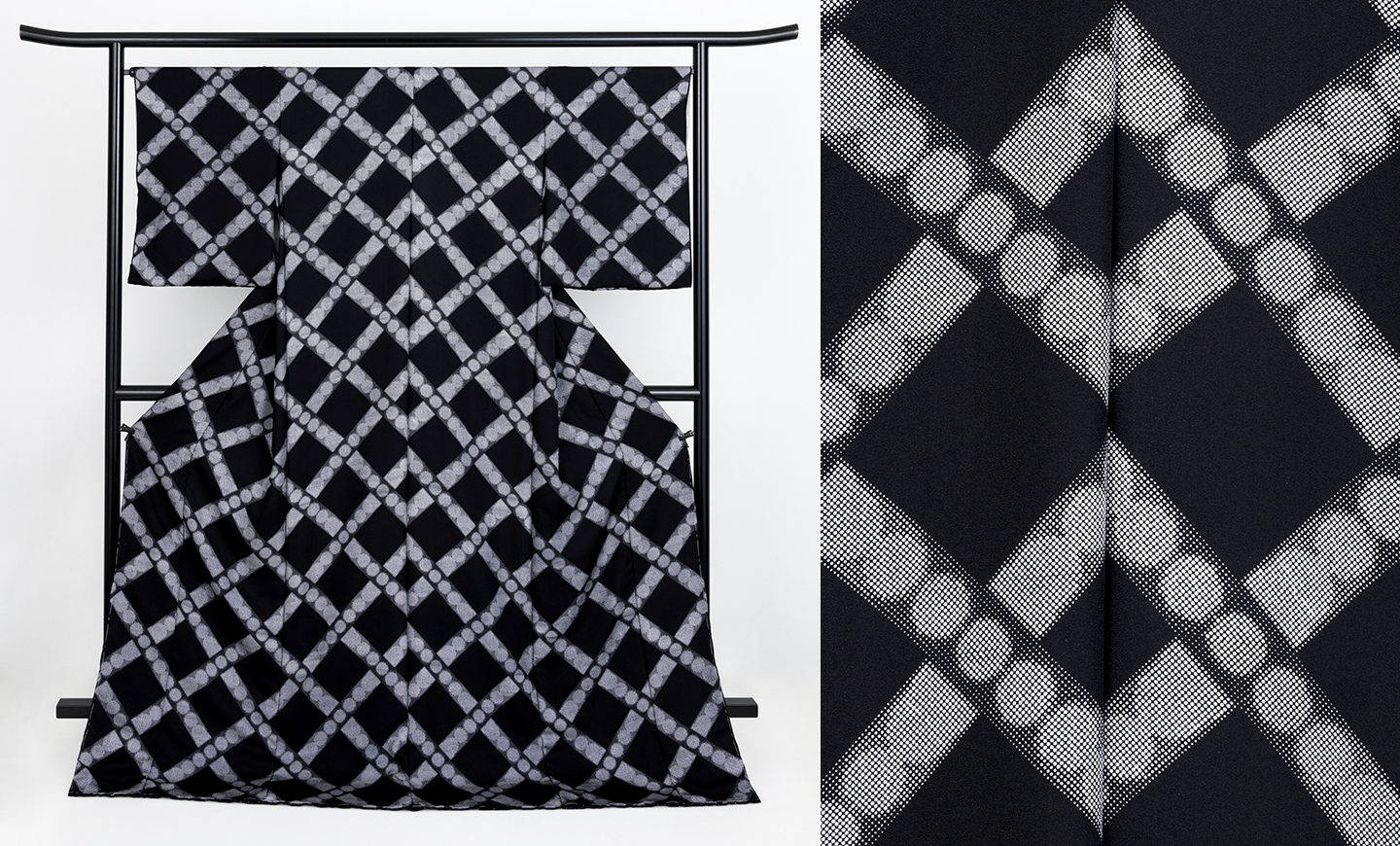
With a history spanning over 400 years, Edo Komon can be considered a craft that has already reached a state of completion. However, to preserve its values and carry them into the future, it’s necessary to not just keep making the old but also to create new pieces that align with contemporary times. To unearth new forms of beauty and broaden the scope of this traditional craft, it’s essential to view kimono through the lens of their “appeal as seen from outside Japan.”
“What we want to preserve is our technique. For that, the design can—and should—change. By doing so, we can introduce fresh perspectives into Edo Komon,” says Hirose, who, besides Paris Komon, actively creates original patterns and designs and even adds variations to traditional motifs.
Naturally, preserving tradition is important. However, it’s not a matter of preserving something just because it’s traditional. What truly matters is that it is beautiful. The techniques of Edo Komon have been passed down to create this beauty. “That’s why continuing to create beautiful things is the most important of all,” Hirose says.
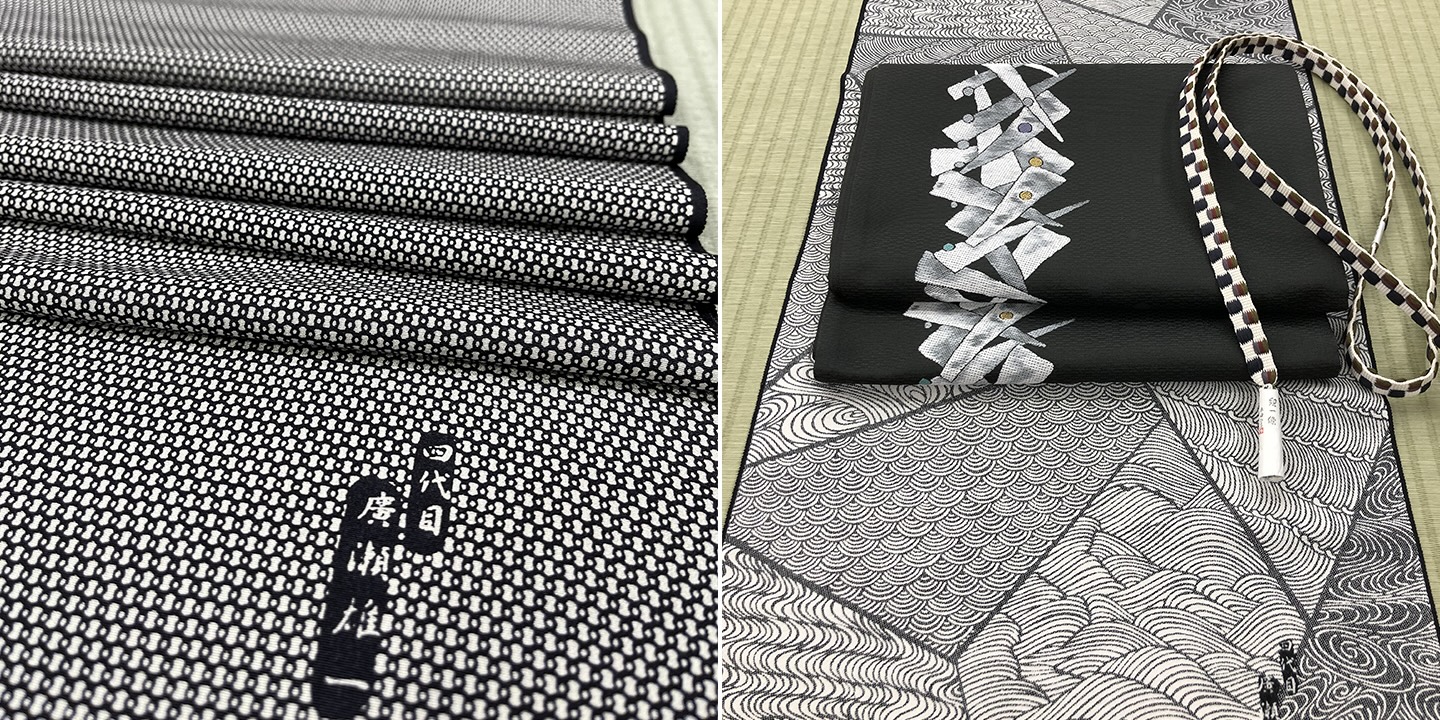
Edo Komon, a craft passed down over centuries, has long been cherished for its beauty, and will surely continue to be now and in the future. Hirose humbly admits that he doesn’t know if the new patterns he has created will still exist 100 years from now, but this uncertainty only fuels his desire to refine his skills further and pursue what he, as a craftsman, believes is truly good.
For Hirose, the current trend of renewed interest in traditional handcrafting is a favorable tailwind. The charm of kimono is becoming increasingly recognized worldwide, with an uptick in orders from overseas customers in recent years. To open new doors for Edo Komon, Hirose envisions possibilities beyond just Paris Komon— for instance, New York Komon, or other novel Komon variations created with designers from other countries. Edo Komon, soaring through time and space, is now poised to spread its wings into the future and the world.
